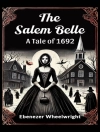In ‘Star of India, ‘ Alice Perrin intricately weaves a narrative set against the vibrant backdrop of British India during the late 19th century. The novel is characterized by its rich descriptions, evocative imagery, and deep psychological insight into its characters, reflecting the complexities of colonial life. Through the interplay of personal and political conflicts, Perrin explores themes of identity, morality, and cultural clash, drawing readers into a world where enchantment and disillusionment coexist. The book’s literary style exhibits a keen sense of realism blended with a touch of romanticism, effectively transporting readers to an era fraught with tension and transformation. Alice Perrin, a significant figure in early 20th-century literature, was born in 1865 in India, offering her a unique perspective that informs her storytelling. Her lived experience as the daughter of a British army officer provides authenticity to her portrayal of Indian landscapes, customs, and societal intricacies. Perrin’s writing is often imbued with a sense of nostalgia and critical reflection on colonial attitudes, thereby enriching the reader’s understanding of the historical context from which her stories emerge. This novel is highly recommended for readers who appreciate historical fiction that grapples with complex themes and characters. Perrin’s nuanced exploration of societal dynamics amidst cultural intersections makes ‘Star of India’ not only a captivating read but also a profound commentary on the human condition in times of change.
Over de auteur
Alice Perrin (1867–1934) was a notable British author known for her engaging portrayal of colonial life in India. Born to British parents based in India, she spent much of her youth there, an experience that profoundly influenced her literary work. Perrin’s intimate knowledge of Anglo-Indian society allowed her to paint a vivid and authentic picture of the daily life, customs, and the complex interplay of cultural dynamics during the British Raj. Her novel ‘Star of India’ is a testament to this, wherein she intricately weaves human emotions and relationships against the backdrop of colonial India, a theme recurrent in much of her literary oeuvre. Best remembered for her romance and supernatural fiction, Perrin’s writing style often draws comparisons to contemporaries such as Rudyard Kipling, though her narratives are distinctive for their exploration of the domestic sphere and eerie psychic phenomena. Her contribution to literature provides readers with a nuanced perspective of colonial-era India, making her works valuable not only for their storytelling but also for their historical context. Perrin served as the vice president of the Society of Authors and was a respected figure in literary circles of her time. Today, she stands as a significant voice that offers insight into the societal narratives of her era.












